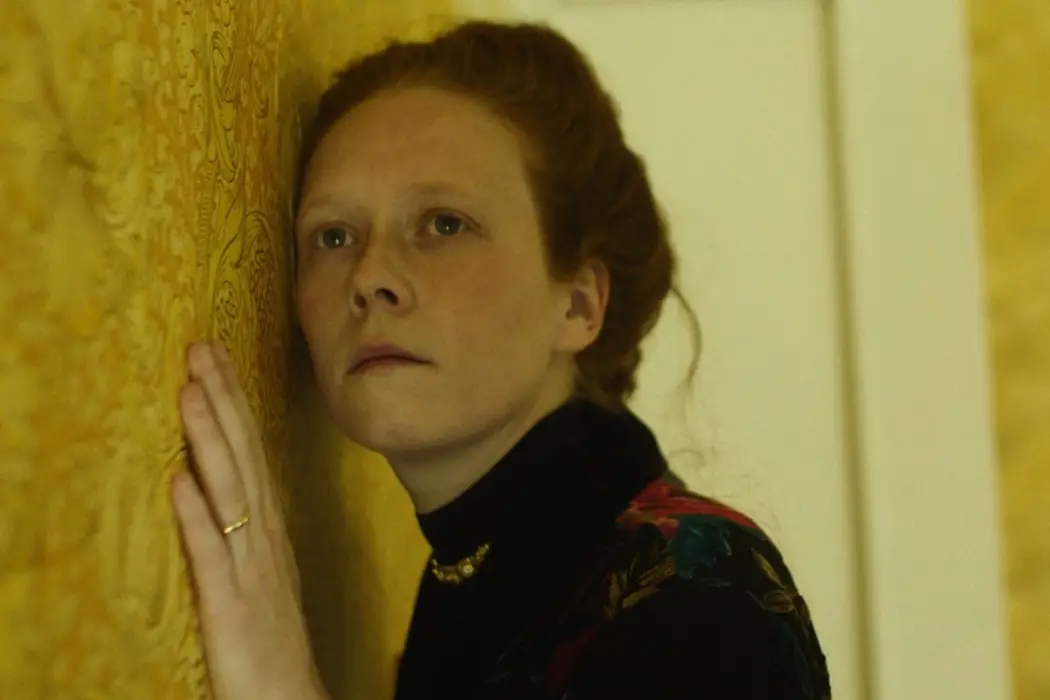Though Mona Caird’s The Yellow Drawing-Room is full of color metaphors, framing color around the nature motifs throughout reveal the societal shift from grey-blue to yellow or rather the Old Woman to the New Woman. Nature offers a framework to contextualize colors and expand the color metaphors to the natural world, which connects to the woman’s place in both the private and public sphere or rather in the home and out in nature spheres.
The narrator positions the yellow room around nature motifs as initial points of disagreement with the type of woman Vanora is. Comparing types of women to color and nature elements like the sun, the narrator sets the room “…in a flow of golden light; no ladylike antidote, however strong, could lead one to ignore it. It was radiant, bold, unapologetic, unabashed. It was not the room that my ideal woman would have created. My ideal woman would unfailingly choose a nice tone of grey-blue” (Caird 1892, 104). The “flow of golden light” evokes both water and light imagery. The following ode to how “un-ladylike” these natural elements are separates women from the natural world, instead instructing a re-aligning to the narrator’s version of an “ideal woman” with “grey-blue” hues. Perhaps, Caird suggests the ridiculousness of the narrator’s obsession with associating light and color as a foundation to criticize a strong-headed woman.
The stark contrast between “yellow” and “grey-blue” offers a physical manifestation of the Old Woman transforming into the New Woman. That New Woman coding correlates yellow and radiance or “golden light” to the sun and a change to the natural world. Though, yellow is “unapologetic” and abrupt in its change from the narrator’s “ideal woman’s” choice of a “grey-blue” room, it is simultaneously natural as it blends with the sun’s light.
Posing “unapologetic” women with nature disassociates the narrator and society’s more “idealistic” definition for women’s positioning in gender hierarchies. If not the natural world as it is too “radiant” and “bold,” Caird codes men to desire women with what the Victorian era considered more natural, intuitive responsibilities and to more respected “grey-blue” rooms. The narrator disagrees with Vanora’s choice of nature as it differs from the Victorian era’s nature of gender structure positioning men in power over women.
Nature—sun and water—plays a role in Vanora’s womanhood, though, the narrator’s ideas of feminine nature in societal terms strays away from the natural world and absorbs order from societal instruction as he says Vanora continues “to think and act in disharmony with the feminine nature and genius” (Caird 1892, 106). While the narrator implicates nature and the sun’s rays, he also mentions the breaking from “feminine nature and genius.” The varying uses of nature stresses how society used scientific and natural elements in the Victorian era to prove women had instinctual domestic responsibilities and to associate a woman attuned to nature as estranged from those traditional roles.
Though, this gender structuring and difference in nature definitions advantaging men is contradicted when Caird also grants women slight mobility with the repeated mention of women having to “create” and “choose” colors, which implicates women at the centers of creation stories. Geographically, Caird locates women in domestic narratives as they both create rooms and are confined to them. This mobilized and confined space relates to Charlotte Perkin’s Gilman’s The Yellow Wallpaper, in which the female narrator, diagnosed with hysteria and given the “rest cure” by her doctor husband, gains agency in her confined space by becoming one with the moving wallpaper (Gilman). The yellow coloring in both texts implicate bold colors and illness narratives as symptomatic of women straying away from the boxed in “feminine nature and genius” designed by men. Yellow draws attention to their misbehavior, painting targets on their backs and incentivizing a return to the traditional natural order even though there is anything but order at the end of The Yellow Drawing-Room when the narrator causes chaos between the sisters.
Image from the 2021 film rendition of The Yellow Wallpaper.
Works Cited:
Caird, Mona. The Yellow Drawing-Room. 1892.
Gilman, Charlotte Perkins. The Yellow Wallpaper. First Avenue Editions, A division of Lerner Publishing Group, Inc., 2017.
Image: https://www.filminquiry.com/the-yellow-wallpaper-2021-review/
Daddles this analysis of color in The Yellow Drawing Room is really interesting! It’s got me thinking about even more potential implications behind the huge emphasis Caird places on the different colors associated with Vanora (New Woman) and Clara (Old Woman). My first association with the color yellow is happiness, and my first association with blue/gray is sadness– maybe these traditional associations suggest that there is more joy in embracing the New Woman than the Old Woman. Yellow and gray also remind me of gold and silver– Caird might be expressing that there is something valuable or superior about standing out and contradicting societal norms.